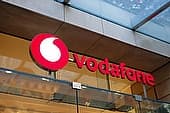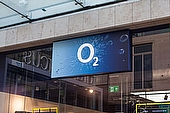Home > Mobile > News > Half of UK's rural deprived areas still 5G not spots
Half of UK's rural deprived areas still 5G not spots
Study finds 46% of rural areas with high levels of deprivation still lack 5G coverage, compared to 2.7% in urban locations.
A study commissioned by Vodafone has revealed the UK's digital divide remains, especially where 5G mobile coverage is concerned.
The report correlates areas of the UK facing high levels of deprivation with 4G and 5G mobile coverage.
It found nearly half (46%) of rural deprived areas were also without 5G coverage, while only 2.7% of urban deprived areas were also 5G not spots.

Rural deprivation
Vodafone's report aims to highlight how rural parts of the UK, particularly those already facing high levels of deprivation, are being left behind digitally.
838,000 people living in deprived rural communities would benefit from access to 5G mobile broadband, according to the report.
In comparison, just 2.7% of deprived urban areas are lacking 5G coverage, suggesting a widening digital divide as 5G has been rolled out primarily within towns and cities.
The report shows Scotland, Wales, East Anglia, Cumbria, and the South West of England are the most affected areas, with both high levels of deprivation and low levels of mobile connectivity.
5G benefits
Vodafone's aim in releasing this report is to highlight the potential benefits of 5G being able to bring improved access to healthcare, education, and agriculture, which could in itself help relieve issues of deprivation.
They say 5G offers to bring a range of benefits to rural communities, including the ability to react to health emergencies in hard-to-reach areas. Vodafone's Skyport drone programme, for example, can deliver medicines in just 15 minutes, compared to up to 36 hours in remote rural locations.
Remote learning and working also becomes more possible, with 5G able to connect residents to virtual classrooms, with distance learning opportunities being created, as well as widen access to remote and online-based jobs.
In terms of agriculture, 5G also brings benefits, with sensors able to provide data which can help farmers improve yield and crop quality by 15%.
5G merger
To achieve this, Vodafone are pledging to close the digital divide by delivering on the Government's 5G target of 95% coverage by 2030, as well as improving on that by reaching 99% coverage as part of their proposed merger with Three UK.
Andrea Dona, Chief Network Officer at Vodafone UK, said, "We believe everyone should have access to connectivity and our research shows the alarming rate at which almost a million people living in deprived rural communities are being left behind. It's clear we need to accelerate the roll-out of the UK's 5G infrastructure, which is what we commit to do as part of our proposed merger with Three UK. We would close the rural digital divide by delivering 95% 5G Standalone geographic coverage by 2034."
However, the merger between Vodafone and Three is still being debated, with the Competition and Markets Authority (CMA) having recently called for comments on the impact of the consolidation.
Not everyone agrees it's a good idea, with trade union, Unite, largely against the merger. George Stevenson, an investigative researcher at Unite said, "This evidence if clear: this merger is a terrible deal for Britain".
"When you reduce competition, prices go up, jobs get slashed, and the promise of investment turns out to be hollow," he said. "We will continue fighting to ensure this harmful merger is scrutinised thoroughly by regulators and government alike."
So, while Vodafone and Three are promising to invest £11 billion in 5G infrastructure over the next ten years if the merger goes ahead, some voices are suggesting it could also see prices go up by £300 per year for consumers as a result of less competition in the mobile market, as well as a reduction in the number of jobs in the sector.
It's also worth noting that while the benefits of greater 5G coverage are clear, it should be said, it may not be the panacea to addressing deprivation across the UK entirely.
According to the Office for National Statistics (ONS), areas with the highest levels of income deprivation in the UK are generally in urban areas, while those with the least income deprivation are more evenly spread between urban and rural locations.
Middlesbrough, Knowsley (on the outskirts of Liverpool), and Blackpool, are the top three most income deprived areas in the UK, and each have good indoor and outdoor 4G mobile coverage, while Blackpool also has good indoor and outdoor 5G coverage as well.

We are independent of all of the products and services we compare.

We order our comparison tables by price or feature and never by referral revenue.

We donate at least 5% of our profits to charity, and we have a climate positive workforce.
Get insider tips and the latest offers in our newsletter
Latest News

05 December 2024
Merger of Vodafone and Three UK approved
19 August 2024
New O2 Essential Plan for those on social benefits
06 August 2024
Three UK moves to pounds and pence annual price rises


Comments